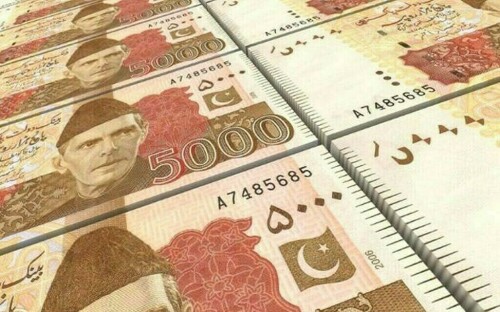State Bank Injects Record Liquidity into Banks
The State Bank of Pakistan (SBP) has injected a substantial Rs14.3 trillion into both conventional and Shariah-compliant banks for a one-week duration. This move aims to address a liquidity shortfall in the banking system, triggered by significant cash withdrawals during Eid-ul-Adha and delays in anticipated foreign financial inflows.
The volume of this injection, executed through open market operations (OMO), represents nearly 44% of the total deposits, which stood at Rs32.7 trillion in May 2025, as per the latest central bank data.
According to Arif Habib Limited (AHL) and Topline Research, the increase in OMO stock is primarily attributed to increased currency circulation during Eid and postponements in external financial inflows. This assessment was based on insights from an analyst briefing with SBP Governor Jameel Ahmad, following the release of the recent monetary policy earlier in the week.
AHL cited Ahmad’s expectation that “OMO levels are expected to decline in the coming weeks as (external) inflows materialise.”
Sana Tawfiq of AHL and Awais Ashraf from AKD Securities noted that the cumulative supply of over Rs14 trillion to banks through OMO represents a historic high in such injections.
Tawfiq elaborated on Governor Ahmad’s explanation, stating that substantial cash withdrawals during Eid reduced deposit levels, thereby heightening the demand for liquidity within the financial system.
Furthermore, governmental reliance on domestic debt has grown due to delays in external funds from multilateral institutions such as the International Monetary Fund (IMF), World Bank, and Asian Development Bank (ADB).
Tawfiq added that the government has increasingly depended on domestic debt, including borrowing from commercial banks, due to lower-than-expected tax revenue relative to government expenditures.
This shortfall in tax collection is contributing to a rising fiscal deficit, which is being addressed through increased borrowing.
Ashraf pointed out that diminished external inflows over the past two to three years have forced the government to rely predominantly on domestic debt to cover the budget deficit.
He indicated that commercial bank financing and national saving schemes have been significant avenues for the government to raise debt. Currently, bank loans constitute Rs28.1 trillion of the total Rs31.8 trillion in domestic debt.
SBP OMO Details:
Data analysis reveals that the SBP injected Rs13.9 trillion into conventional commercial banks at a rate of return of 11.03% for seven days, accepting all 34 loan requests from banks.
Additionally, the central bank provided Rs375 billion to Shariah-compliant banks at a rate of return of 11.11% for the same period, fulfilling all three requests from Islamic banks.



Comments (0)
No comments yet. Be the first to comment!
Leave a Comment